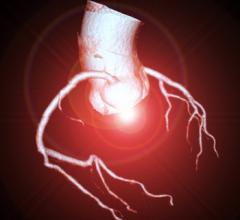August 15, 2007 - Performing cardiac CTA after coronary artery bypass surgery (CABG) can reveal unsuspected and potentially significant findings beyond the heart, according to a recent study conducted by researchers at the University of Maryland School of Medicine, located in Baltimore, MD.
"Our interest in this topic developed because we were performing many cardiac CTA examinations, including those for bypass grafting, and we wondered how often we would find unrelated but clinically significant findings in the heart and lungs," said Charles White, MD, senior author of the study. "We wanted to know the effect of using intravenous contrast and thinner slices on the prevalence of these findings," he added.
The study included 259 patients who had a cardiac CTA examination postoperatively. Of these 259 patients, 51 had at least one unsuspected, potentially significant finding. Of these, 24 had a cardiac finding such as intracardiac thrombus, and 34 patients had a non cardiac finding such as: pulmonary embolism, lung cancer, or pneumonia.
"There was a fairly high rate of abnormalities that are found incidentally outside the coronary arteries and bypass grafts," said Dr. White. "The take home message is that these examinations require physician interpreters who are trained to read the entire CT, not just the coronary vessels," he said.
"One of the issues that we found somewhat surprising is the number of patients with pulmonary embolism who had undergone recent bypass grafting," he said. "It is reasonable to suspect that cardiac surgery patients who are often immobilized after their procedure might have these problems; but this connection is certainly not well known in the radiology community," he said.
The full results of this study appear in the August issue of the American Journal of Roentgenology, published by the American Roentgen Ray Society.
For more information: www.ajronline.org


 December 11, 2025
December 11, 2025 









